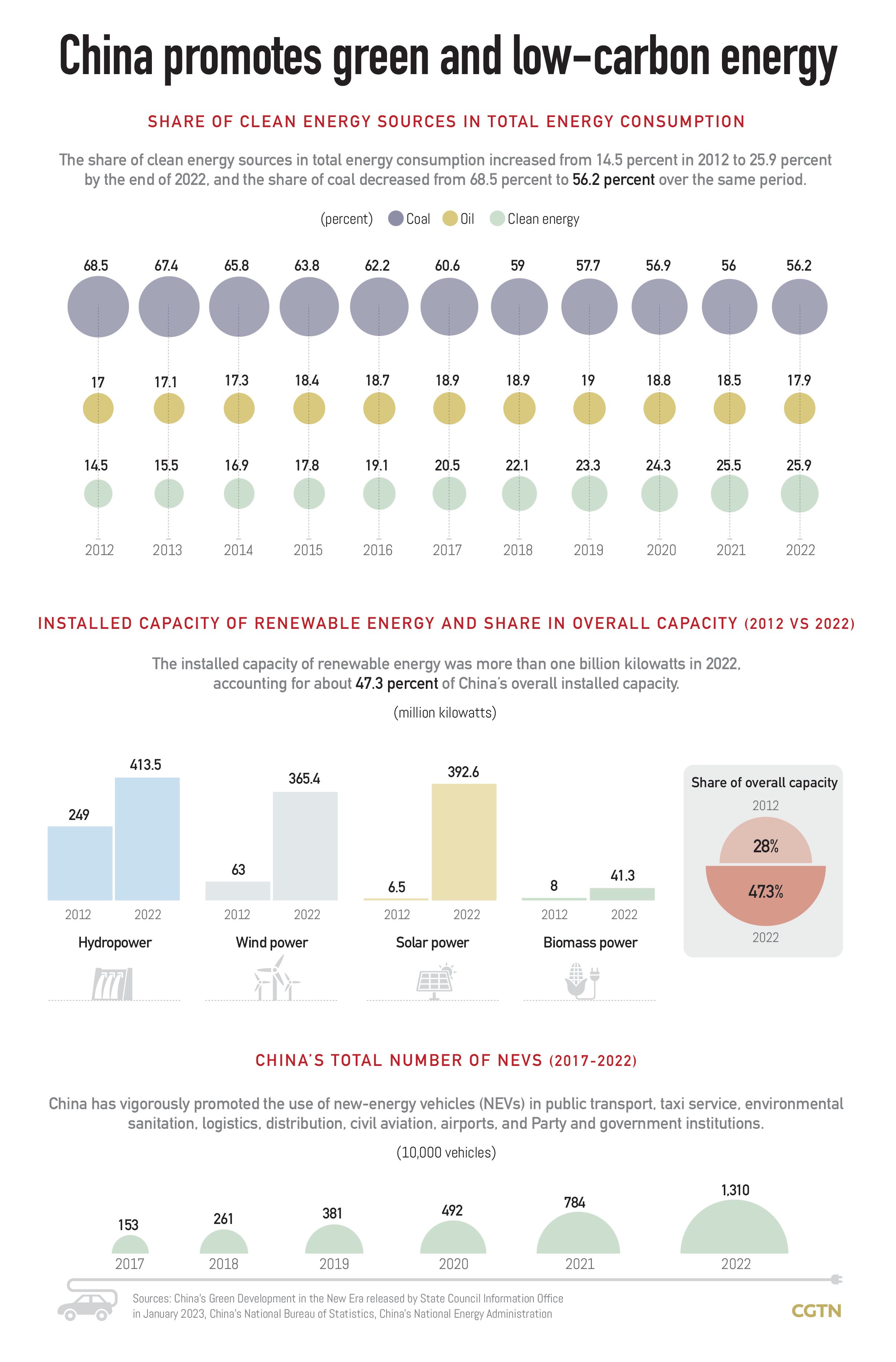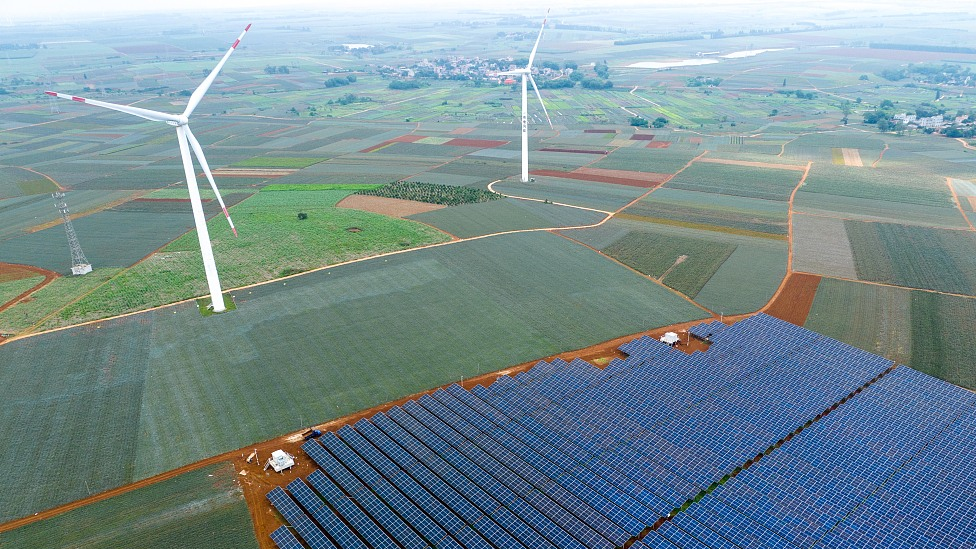
China has in recent years enhanced its green transition on its way of pursuing high-quality development to achieve its "dual carbon" goal – a peak carbon dioxide emission before 2030 and carbon neutrality before 2060.
Among the endeavors, clean energy, renewable energy and new-energy vehicles have been at the forefront of the country's green and low carbon development in past years, according to official statistics.
Data from National Bureau of Statistics showed the share of clean energy sources in total energy consumption increased from 14.5 percent in 2012 to 25.9 percent by the end of 2022, and the share of coal decreased from 68.5 percent to 56.2 percent over the same period.
It's notable that the clean energy consumption has sustained a continuous growth since 2012.
Renewable energy has also played a significant role in China's drive to optimize its energy mix.
The installed capacity of renewable energy surpassed 1,200 gigawatts (GW) by the end of 2022, accounting for 47.3 percent of China's overall installed capacity and also an increase of 2.5 percentage points over 2021, said Wang Dapeng, deputy head of the new energy and renewable energy department at the National Energy Administration, at a press conference in February.
Wang added, the installed capacity of hydropower, wind power and solar power respectively exceeded 400 GW, 360 GW and 390 GW.

Wind turbines stand in green fields and photovoltaic panels are lined up at a wind farm in Qujie Town, Xuwen County, Zhanjiang City, south China's Guangdong Province, May 1, 2023. /CFP
Wind turbines stand in green fields and photovoltaic panels are lined up at a wind farm in Qujie Town, Xuwen County, Zhanjiang City, south China's Guangdong Province, May 1, 2023. /CFP
As China is transitioning towards a greener development mode, low-carbon industries in the country have been flourishing in recent years and the booming new energy vehicle (NEV) is a good example.
By the end of 2022, the number of China's registered NEVs had reached 1.31 million, a year-on-year growth of 67.13 percent , according to the Ministry of Public Security.
And in 2022, China sold some 6.89 million NEVs, up more than 93 percent year-on-year. In the same year, the NEV production also soared nearly 97 percent to about 7.06 million units, said Xin Guobin, vice-minister of industry and information technology, adding that the figure made China rank first in the world on the production and sales volume of NEVs for eight consecutive years.
Government support matters a lot in the rapid development of NEV industry.
China has vigorously promoted the use of new-energy vehicles in public transport, taxi service, environmental sanitation, logistics, distribution, civil aviation, airports, and Party and government institutions, according to the white paper titled "China's Green Development in the New Era" released by China's State Council Information Office in January.
As China marches on its way toward high-quality development, the 2023 Government Work Report stressed world's biggest developing country will continue its transition to green development.
China should promote R&D for the clean and efficient use of energy, move faster to develop a new energy system, and increase the share of renewable energy in the country's energy mix, according to the 2023 Government Work Report.
Read more:
Graphics: Biodiversity conservation in China
Data editor: Yao Nian
Graphics designer: Mukesh Mohanan